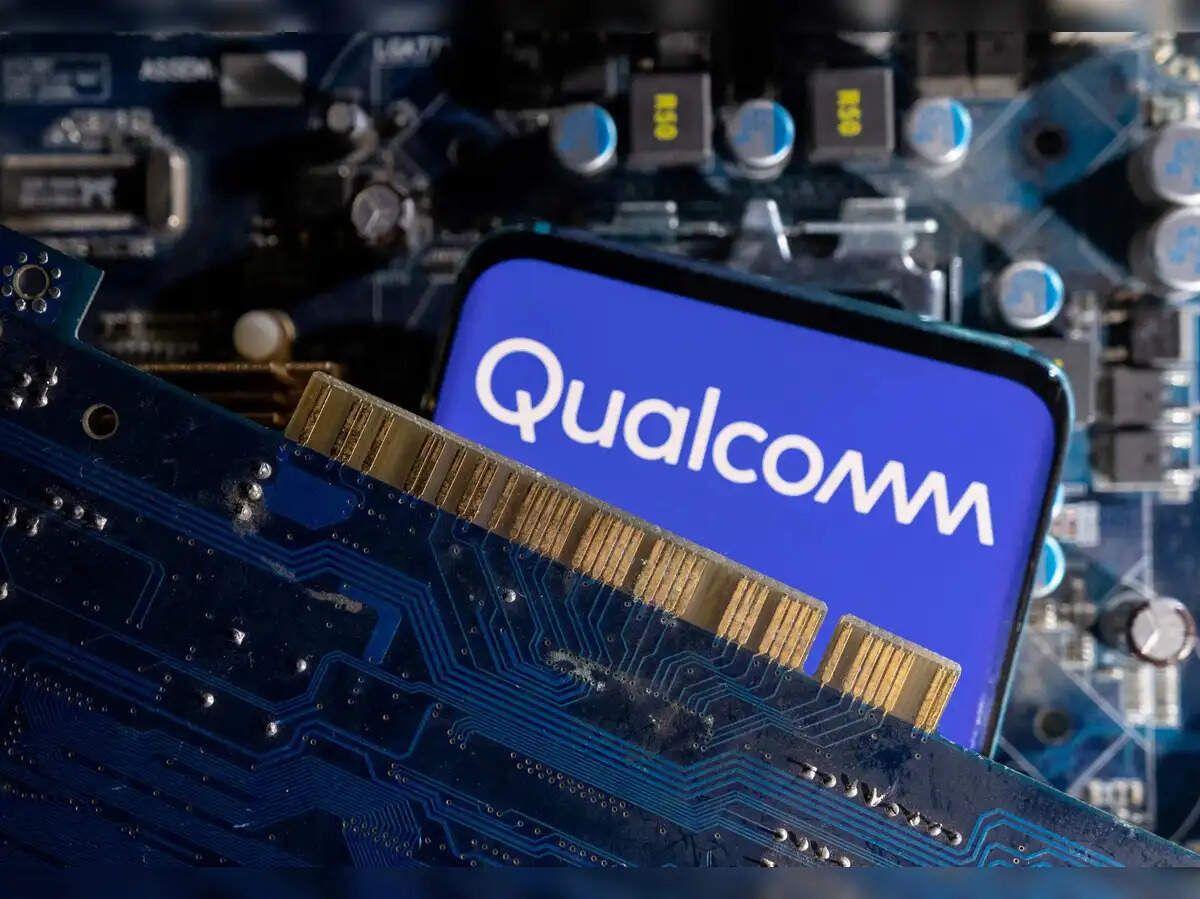Qualcomm Adopts Arm's Latest Architecture Amidst Fierce Competition and Past Legal Tensions
2 Sources
2 Sources
[1]
Qualcomm shifts chips to newer Arm tech as competition with Apple, MediaTek heats up - The Economic Times
The decision at least partially settles a question of whether and how Qualcomm would continue to work with Arm technology, following an acrimonious legal battle between the two last year, and the move is likely to raise revenue for Arm which charges more for the newer tech.Qualcomm has shifted its flagship chips to the latest generation of Arm Holdings' computing architecture with new features aimed at better AI performance, sources familiar with the matter said, a move that could boost Arm's revenues and help Qualcomm's chips compete against offerings from MediaTek and Apple. The decision at least partially settles a question of whether and how Qualcomm would continue to work with Arm technology, following an acrimonious legal battle between the two last year, and the move is likely to raise revenue for Arm which charges more for the newer tech. San Diego, California-based Qualcomm last week introduced a new generation of PC and phone chips. Unlike previous generations, two sources familiar with the matter said Qualcomm's new chips will use the ninth version of Arm's computing architecture, called "v9" in the industry, which includes several improvements aimed at helping chips handle tasks from chatbots and image generators better. Qualcomm rivals such as MediaTek, which has at times eclipsed Qualcomm's market share for mobile phone chips, has publicly confirmed its use of Arm's v9, and most analysts believe Apple uses it, too. The technology is called an instruction set architecture, a fundamental technology that controls what kind of apps can run on a central processing unit (CPU). Qualcomm declined to comment on what technology it used for its newest chips but said in a statement that "we chose the instructions that make sense for our customers. That's the beauty of having our own CPU design team - we can pick and choose the instructions that add value." Arm declined to comment. While Arm faces competition from newer rivals such as RISC-V, an open chip standard that is free to use, that technology is decades less mature than Arm's and has a smaller software developer base. Qualcomm also could have elected to stick with a previous generation of Arm technology, as it did with chips announced last year. How much Qualcomm's move could bolster Arm revenue is difficult to calculate because Qualcomm licenses Arm's computing architecture but designs much of its chip itself rather than buying design elements off the shelf from Arm, said Jay Goldberg, senior analyst for semiconductors and electronics at Seaport Research Partners. But the move is remarkable because of the legal battle, which has not completely ended, Goldberg said. Less than a year ago, Arm had threatened to cancel a key license to Qualcomm, though it later rescinded that threat. "That's very positive for Arm," Goldberg said of Qualcomm's reported move. "These are companies that were fighting each other. Qualcomm could have gone a very different path here."
[2]
Qualcomm shifts chips to newer Arm tech as competition with Apple, MediaTek heats up
SAN FRANCISCO (Reuters) -Qualcomm has shifted its flagship chips to the latest generation of Arm Holdings' computing architecture with new features aimed at better AI performance, sources familiar with the matter said, a move that could boost Arm's revenues and help Qualcomm's chips compete against offerings from MediaTek and Apple. The decision at least partially settles a question of whether and how Qualcomm would continue to work with Arm technology, following an acrimonious legal battle between the two last year, and the move is likely to raise revenue for Arm which charges more for the newer tech. Arm shares jumped 5% during the regular session after Reuters published the news of Qualcomm's decision to use Arm's latest technology. San Diego, California-based Qualcomm last week introduced a new generation of PC and phone chips. Unlike previous generations, two sources familiar with the matter said Qualcomm's new chips will use the ninth version of Arm's computing architecture, called "v9" in the industry, which includes several improvements aimed at helping chips handle tasks from chatbots and image generators better. Qualcomm rivals such as MediaTek, which has at times eclipsed Qualcomm's market share for mobile phone chips, has publicly confirmed its use of Arm's v9, and most analysts believe Apple uses it, too. The technology is called an instruction set architecture, a fundamental technology that controls what kind of apps can run on a central processing unit. Qualcomm declined to comment on what technology it used for its newest chips but said in a statement that "we chose the instructions that make sense for our customers. That's the beauty of having our own CPU design team - we can pick and choose the instructions that add value." Arm declined to comment. While Arm faces competition from newer rivals such as RISC-V, an open chip standard that is free to use, that technology is decades less mature than Arm's and has a smaller software developer base. Qualcomm also could have elected to stick with a previous generation of Arm technology, as it did with chips announced last year. How much Qualcomm's move could bolster Arm revenue is difficult to calculate because Qualcomm licenses Arm's computing architecture but designs much of its chip itself rather than buying design elements off the shelf from Arm, said Jay Goldberg, senior analyst for semiconductors and electronics at Seaport Research Partners. But the move is remarkable because of the legal battle, which has not completely ended, Goldberg said. Less than a year ago, Arm had threatened to cancel a key license to Qualcomm, though it later rescinded that threat. "That's very positive for Arm," Goldberg said of Qualcomm's reported move. "These are companies that were fighting each other. Qualcomm could have gone a very different path here." (Reporting by Stephen Nellis and Max Cherney in San Francisco; Editing by Stephen Coates) By Stephen Nellis and Max A. Cherney
Share
Share
Copy Link
Qualcomm shifts to Arm's v9 architecture for its flagship chips, potentially boosting Arm's revenue and enhancing AI performance. This move comes despite recent legal disputes and intensifying competition with Apple and MediaTek.

Qualcomm's Strategic Shift to Arm's Latest Technology
Qualcomm, the San Diego-based chip giant, has made a significant move by adopting Arm Holdings' latest computing architecture for its flagship chips. This decision comes in the wake of intense competition with rivals like Apple and MediaTek, and despite recent legal tensions between Qualcomm and Arm
1
.Embracing Arm's v9 Architecture
Qualcomm's newest generation of PC and phone chips will utilize Arm's ninth version of computing architecture, known in the industry as 'v9'. This architecture includes several improvements aimed at enhancing the chips' ability to handle advanced tasks such as chatbots and image generators
2
. The move aligns Qualcomm with competitors like MediaTek, who have publicly confirmed their use of Arm's v9, and Apple, who is believed to be using similar technology.Implications for Arm and Qualcomm
This strategic decision is expected to have positive implications for both companies:
-
For Arm: The adoption of its latest technology by Qualcomm is likely to boost Arm's revenue, as the newer tech commands higher prices
1
. -
For Qualcomm: The move could help its chips better compete against offerings from MediaTek and Apple, particularly in AI performance
2
.
Related Stories
Overcoming Past Tensions
The decision is particularly noteworthy given the recent legal battle between Qualcomm and Arm. Less than a year ago, Arm had threatened to cancel a key license to Qualcomm, though this threat was later rescinded
1
. Jay Goldberg, senior analyst at Seaport Research Partners, commented on the significance of this move, stating, "That's very positive for Arm. These are companies that were fighting each other. Qualcomm could have gone a very different path here"2
.Qualcomm's Stance and Future Implications
While Qualcomm declined to comment specifically on the technology used in its newest chips, the company emphasized its ability to choose instructions that add value for its customers. This flexibility is attributed to Qualcomm's in-house CPU design team
1
.The exact impact on Arm's revenue remains difficult to calculate due to the nature of Qualcomm's licensing agreement. Qualcomm licenses Arm's computing architecture but designs much of its chip internally, rather than purchasing off-the-shelf design elements from Arm
2
.References
Summarized by
Navi
Related Stories
Arm Threatens to Revoke Qualcomm's Chip Design License, Jeopardizing AI PC and Mobile Chip Production
23 Oct 2024•Business and Economy

Qualcomm and Arm Report Strong Earnings, Highlight AI Focus Amid Legal Dispute
07 Nov 2024•Business and Economy

Arm vs. Qualcomm: High-Stakes Trial Over AI Chip Licensing Begins
17 Dec 2024•Technology

Recent Highlights
1
AI Chatbots Sway Voters More Effectively Than Traditional Political Ads, New Studies Reveal
Science and Research

2
Trump signs executive order to override state AI laws despite bipartisan pushback
Policy and Regulation

3
OpenAI warns upcoming AI models will likely pose high cybersecurity risk with zero-day exploits
Technology





